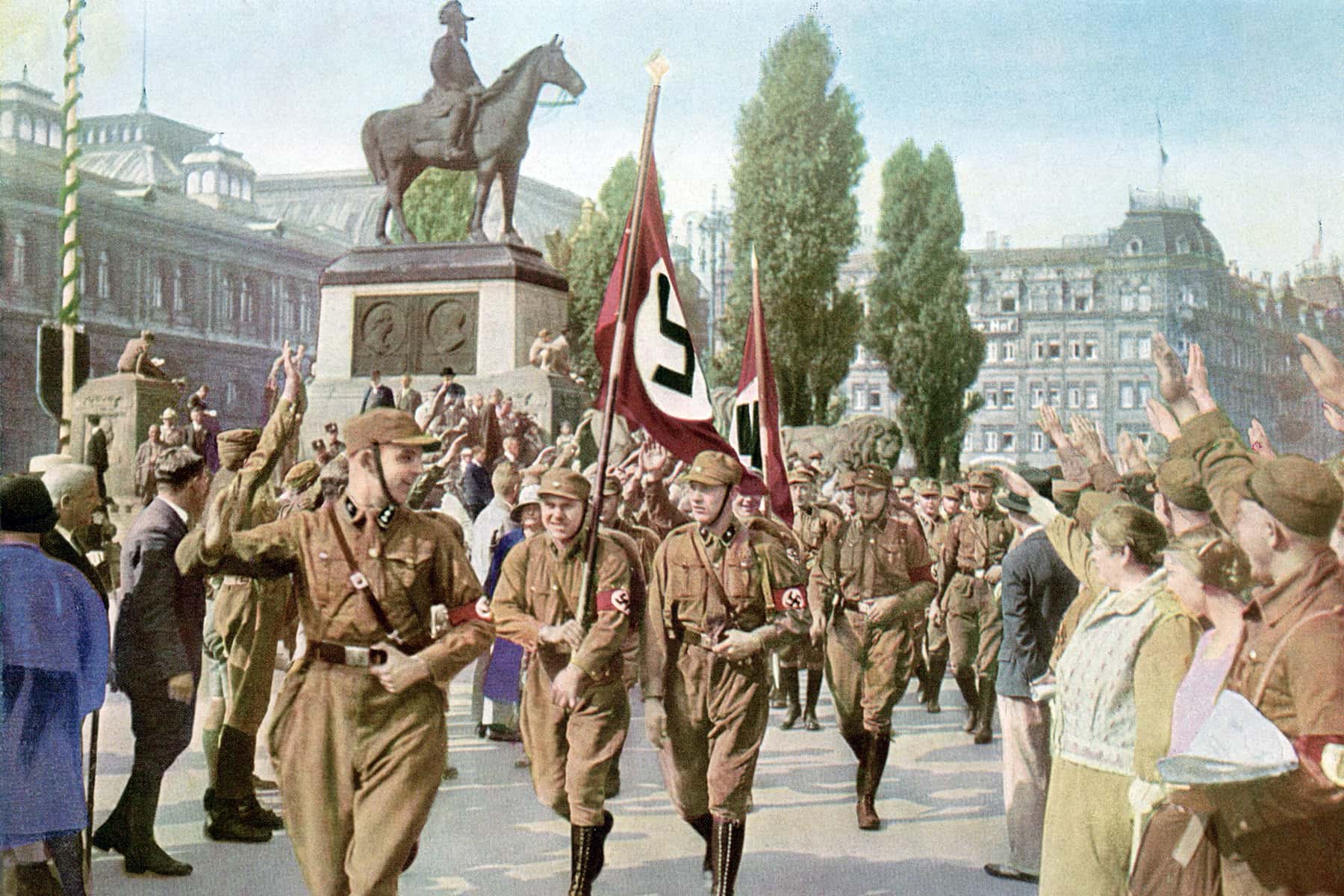
Last month, amid America’s confrontation with its racist legacy – which has seen monuments to Jefferson Davis toppled, the Mississippi state flag lowered, Gone With the Wind pulled from HBO’s streaming service, and music groups such as Lady Antebellum and the Dixie Chicks rebranding in an effort to distance themselves from memory of the Confederacy – I came across a tweet that put these headline-grabbing goings-on, and the backlash to them, in perspective:
Trying to imagine a version of WW2 where the Nazis just get pushed into Bavaria and surrender, but keep the swastika on the state flag, slap it on their cars and say stuff like “The Third Reich is my heritage.”
The tweet, by the popular history YouTuber Three Arrows, was tagged with “lol” – as if to drive home just how absurd it would be to see the grandkids of former Nazis puttering around Munich in VWs adorned with swastika bumper stickers, like something out of a pulpy alt-history novel. It is an idea so sinister as to seem cartoonish, and laughable. But something similar goes on in America all of the time.
In Germany, you will not hear debates about Nazi statues. As the moral philosopher Susan Neiman, author of Learning from the Germans: Race and the Memory of Evil, notes, there’s a good reason for that: there aren’t any Nazi statues. The program of denazification began almost immediately after the second world war, established as one of “Four Ds” (along with demilitarization, decentralization and democratization) outlined in the Potsdam agreement of 1945.
An Allied order in 1946 declared illegal “any monument, memorial, poster, statue, edifice, street or highway name marker, emblem, tablet, or insignia which tends to preserve and keep alive the German military tradition, to revive militarism or to commemorate the Nazi Party.”
Known Nazi party members were sacked from their jobs, and forced into cinemas screening footage of concentration camps. To this day, section 86a of the German criminal code prohibits the “use of symbols of unconstitutional organizations”, the Nazi party chief among them.
America’s post-civil war treatment of the slave-owning Confederate states has proved, in a word, different. Although the Confederacy lost the war, it hasn’t always felt that way for Black southerners. After Union troops departed, Black Americans endured decades of terrorist violence perpetrated by the Ku Klux Klan and other anti-Black paramilitary groups, plus segregation and humiliation under Jim Crow.
After their historic drubbing, white southerners waged skirmishes on new fronts, reframing Confederate troops as valiant heroes in the “War of Yankee Aggression,” and recasting chattel slavery not as an abject moral horror, but a matter of states’ rights. The Confederate battle flag was raised over government buildings, monuments to anti-abolitionists were erected in town squares, and popular entertainments such as Gone With the Wind posited the Confederacy as a noble “lost cause”.
The civil war was followed by more than a century of calculated misremembering, proving the French historian Ernest Renan’s maxim that forgetting is “a crucial factor in the creation of a nation”. This southern memorialization, which unfolded against the backdrop of southern segregation as a means of enshrining the legacy of white supremacy, is itself the sort of “erasure of history” that contemporary apologists drone on about when confronted with the righteous keeling of a statue, or the narrowing availability of an 80-year-old movie most people have already seen.
This commemoration morphed, throughout the 20th century, into kitsch. Confederate iconography was embossed on to truck stop baseball caps, covers of Lynyrd Skynyrd albums, and the roofs of souped-up Dodge Chargers. Where neo-Nazism is rightly regarded as a detestable fringe concern, southern pride became a point of acceptable cultural affiliation, like rooting for a given sports team or preferring a certain brand of beer.
Deliberately drained of its historical context, the Confederacy came to stand for something like rebellion, or even something uncomplicatedly virtuous. In fact, the Confederacy was about upholding the institution of slavery in a nation that pretends to hold the equality of all as self-evident truth.
Looking to Germany for lessons on how to respond to historical crimes is incredibly valuable. As Neiman and others have argued, the process of denazification didn’t happen overnight. Many Germans resisted re-education. A 1952 poll showed two in five West Germans freely admitting they believed their nation would be better without Jews. It wasn’t enough to merely denazify. Germany, and Germans, had to be confronted with their horrors.
A culture of remembrance (Erinnerungskultur) emerged to implicate citizens in, and engage them with, their terrible history. German police cadets, for example, are required to visit former death camps, in order to understand first-hand the atrocities of Nazi policing. In 1992, the artist Gunter Demnig began installing raised stones called Stolpersteine (or “stumbling blocks”) at the shops or last known residences of Nazism’s victims.
Changing public conceptions of historical memory is hard work. But the case of postwar Germany shows that a serious national self-reckoning is not only possible, but worth it. Perhaps, in time, the very idea of a truck ripping around the American south, proudly brandishing a Confederate bumper sticker, will seem so ludicrous as to be laughable.
“Imagine being Jewish, walking around a public park, seeing a statue of Hitler, and someone proudly saying, ‘My great-great-grandfather was a Nazi and we should respect our history?’ Of course that doesn’t happen, because it is insane. Now, imagine how a Black person feels seeing Confederate monuments in America.” – Sarah Guilford
Jоhn Sеmlеy
Library of Congress
Originally published on The Guardian as What if we treated Confederate symbols the way we treated the defeated Nazis?
Help deliver the independent journalism that the world needs, make a contribution of support to The Guardian.















